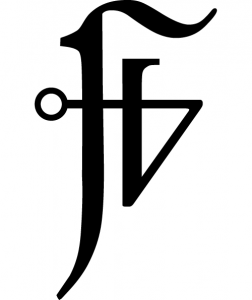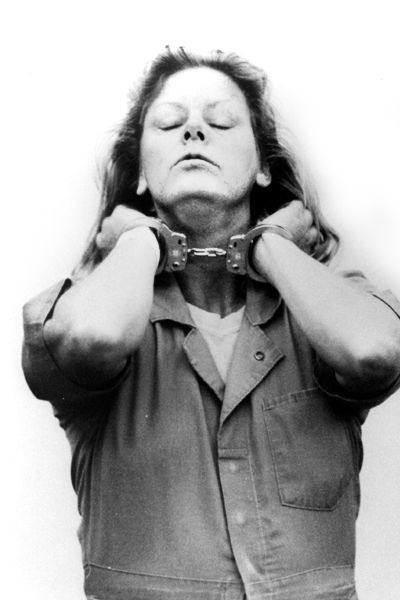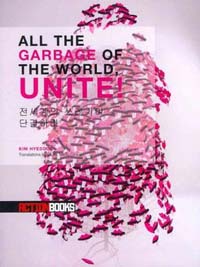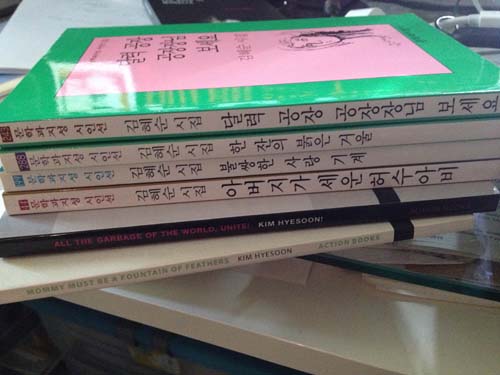ON THE LITERARY DETERRITORIALIZATION OF THE OCCULT
MAGICK IS SUCH my jam it’s the best. To intervene, to sculpt the forces in motion that lie ever behind all phenomena – I really don’t know how to work any other way. Even tho I suck at math, I’m pretty boss at jimmying an algorithm, noticing how the hidden variables shift and float. Numbers are less important than access to archetypes, gods as guides dropping this or that for us to notice, signposts and gestures, fleeting affinities that when frozen stand as nexus-objects multi-dimensional we can intuit beyond boundary. With the Will, that’s us – burning variable altering environment by manipulating the living furniture in the hidden room behind.
 The letter word the sign is never not a sigil. Given, there are greater and lesser degrees of involvement. Sometimes the immobility of the intent is monolithic and plinth-like, entirely discernible, or else it’s more about the splitting/rejoining of a designated grammar, terms or characters as place-holders for the energies contained therein, their recombinant effect resulting in whatever transcendent endgame is necessary to render organs null and of a single glowing body.
The letter word the sign is never not a sigil. Given, there are greater and lesser degrees of involvement. Sometimes the immobility of the intent is monolithic and plinth-like, entirely discernible, or else it’s more about the splitting/rejoining of a designated grammar, terms or characters as place-holders for the energies contained therein, their recombinant effect resulting in whatever transcendent endgame is necessary to render organs null and of a single glowing body.
Expression bunches and twists the only fabric, tears through veils, the silence, so that we might recalibrate, effect a given change, order what we know as Chaos and the rest of it.
One thing I’ve noticed is that literary writing by self-identifying occultists is often quite bad, even as (or because) it demonstrates its principles. On the other hand, literary writers who’re interested in the dynamics of occult philosophy and practice have generally produced exciting work.
The best example, my go-to guy, is Henri Michaux. More adept at watching his own imagination than any other artist I can think of, he explored inner worlds, wrote exorcisms, and all the time revealed his process. The most memorable piece in this vein is a malediction called “I AM ROWING”: READ MORE >
www.shopgoodwill.com

Gleaming with the inconsequential, my constant interest in the literature of the obscure grows. Meanwhile, we all shrink and decay into our modern selves, over-popularing each other’s realities with endless nonsense records of our existence. People seem to disappear into websites. The litany of modern life. The digital record: always forgotten but never gone. The Internet is a hyper-intensification of my impulse to explore the absurdly irrelevant, the abjectly marginal. Everything on the internet just sticks around like a bar friend, drunk at a house party. A funny costume from the 90s and there hyperlinks you won’t touch. Sweaty skin under the light in the living room in a bad photo from the time before good digital cameras. 2.1 megapixels. The web content is profoundly un-useful. It fades into this extreme distance from relevance, but yet never totally decays. This is the asymptote of doom literature, the heating-up of total irralvence, in a context of viral-seeking buzzworthiness. The 0 views, 0 comments culture that I seek, very nearly condences on one particular commerce site.
“And since I did all the talking. I talked about my fallen angels theory.” — Aileen Wuornos

Imagine you are shown a picture of yourself walking along a highway you have never seen. And now you are asked how you got there. Obviously you have to start running. As in running out of what you remember. Or running out, like losing it. And they want you to talk and talk, so immediately you’re talking back through hell. Talking back to hell. Or taking back hell. Maybe sing, you could call it, like hell. Whatever you want to call it and others call it for you. Insanity is a community decision, heroism is a community decision. Violence is the opposite of space. Everything I know about violence is also the nothing I know about violence.
The principal admired her for living in the woods, she wrote. She remembered all the cool black light posters, she wrote. God had it all recorded, she wrote. “Every women,” she wrote, “even adulesent, should learn Self defense, Also carry guns and know how to use them., when reaching a certain age. Like 21…” Some of the other advice she wrote was “just pretend I’m still around” and “ride through it all naturally” and write to keep the wrist from “stiffening up.” There were details she didn’t want to go into. She remembered which days the rain came down hardest. All of this she wrote in letters to her friend. She called the letters kites, which is a pretty common word in prisons. The prison only let each letter be a few pages, so she wrote more than a few letters. If you can still see a face on the other end of the wall, you can fill the wall.
 In 1956, Aileen Wuornos was born Aileen Carol Pittman in Rochester, Michigan. Her father was in prison for the rape and attempted murder of a seven-year-old girl. They never met. He hung himself in prison when she was 13. At 14, she was raped while hitchhiking home from a party. She gave the baby up for adoption. By 15, kicked out of her grandparents’ home, she was living in the woods and sleeping in abandoned cars in the Michigan winter. She survived by way of herself. Her body was involved. She did have friends, and she spent most of the money she earned from sex work on them. Two of the movies made about her are called Damsel of Death and Monster.
In 1956, Aileen Wuornos was born Aileen Carol Pittman in Rochester, Michigan. Her father was in prison for the rape and attempted murder of a seven-year-old girl. They never met. He hung himself in prison when she was 13. At 14, she was raped while hitchhiking home from a party. She gave the baby up for adoption. By 15, kicked out of her grandparents’ home, she was living in the woods and sleeping in abandoned cars in the Michigan winter. She survived by way of herself. Her body was involved. She did have friends, and she spent most of the money she earned from sex work on them. Two of the movies made about her are called Damsel of Death and Monster.
While in prison for the murder of seven straight white men, whom she shot and killed in remote Florida locations, she told Phyllis Chesler “I raised myself. I did a pretty good job. I taught myself my own handwriting, and I studied theology, psychology, books on self-enhancement. I taught myself how to draw. I have been through battles out there raising myself. I’m like a Marine, you can’t hurt me. If you hurt me, I can wipe it out of my mind and keep on truckin’. I took every day on a day-by-day basis. I never let things dwell inside me to damage my pride because I knew what that felt like when I was young.”
READ MORE >
November 15th, 2012 / 12:02 pm
25 Points: Wonderbender
 Wonderbender
Wonderbender
by Diane Wald
1913 Press, 2011
84 pages / $11.00 buy from 1913 Press
1. My friend, N, told me about this book. Sometimes I feel like I don’t know who is living out there. It’s a crushing thing that hovers around me. I want more voices to hunt me. N and I trade pictures of wonder using smart phones. I felt very demanding when I put my request for this book into the Inter Library Loan’s mouth.
2. A t-shirt that said, “Wonderbender” is a t-shirt that I would wear everyday. It would be my fun coat. A wonderbender is what I nods towards everyday. This is a title that jumps out of a cake with Diane Wald’s gray cat in its arms.
3. “odd how you wait for me to speak/odd how i do it.” My friend, J, told me about a letter that has no sound to it. It is a guttural letter. It is pregnant breath. (The mom)ent before and possibility with its posse raging. Lip blubber flying everywhere. Wide load signs. In all shapes the I wonders to all shapes of wonder. Why do this? Why not do it in heaves? Why not bring in overwhelming hauls?
4. Wild gestures. Something beyond facial expressions is what that voice is making you feel uncomfortable at. “when my poetical delineator is out of order…amen.” Michael Taussig parades a thing I am in love with in The Magic of the State. “And because I feel that I am more known by this than knowing…” I think Wonderbender nods along.
5. “First, that is not the name of the bird. The name of the bird is Jen.” I want to name the cat Doug. The other cat will be Linda. Names don’t automatically build a person on a page or build a page a person. Names might just be an empty house flapping curtain teeth. A brush with a body, with a ghostly glow. I read a poem that threw a Jen in at the last minute. The I of the poem called Jen about hearing God farts. Most of the readers I read that poem with had questions about the kind of milkshakes Jen likes, why she was drinking them there, what she might slurp next. I thought about this for days after. Can’t Jen just be hitching a ride in back of the poem? Can’t she just shake there?
6. “It’s got more turquoise in it than that and even/ turquoise / is wrong by a long shot.” Our best avocado say you can be all the bad cover band you want.
7. “You scream. Literally you say hello politely, but I know you scream.” What a good bike ride through a horror movie this line is. Below us, the neighbors do not like us. They say we are loud, screaming with the help of our furniture. We slip a note under the door that says, “We’re sorry. We’re just talking. We’re just waking up. We’re just writing.”
8. “please do not hurt me oh i am absurd.”
9. When is this not a package deal? When is there not a nest at the bottom with cut out broncos in it and film negatives and a scrap of important color leaking? When am I not packaging? When are the women not walking along a slow part of the desert, looking for little bones? “i think i will send you a package.” Something big and spilling.
10. “or i have little information” READ MORE >
November 15th, 2012 / 10:53 am
The thing about the new Disqus system is, when I’m rereading a comments thread and find I want to bump up someone’s comment, I can never remember whether I’ve already clicked ^ or not, so I click it, and then the number goes down by one, and then I have to re-click it.
25 Points: All the Garbage of the World Unite!
 All the Garbage of the World Unite!
All the Garbage of the World Unite!
by Kim Hyesoon
translated by Don Mee Choi
Action Books, 2010
156 pages / $16 Buy from Actions Books, SPD, or Amazon
1. To be clear, this book, and all of Kim Hyesoon’s books, are tainted by my mother’s death.
2. This of course is not the fault of the author. Simply, I first discovered Kim Hyesoon when Action Books published Mommy Must Be A Mountain of Feathers. I was excited by the images of rats, of devouring, crushed bodies, the somehow endearing repulsion. And I was excited to share these poems with my mother. I bought as many of her books in the original Korean as I could order online, and my mother and I were going to read them in Korean together. We hadn’t read together since I was very young so this was a very special prospect for me.
3. My mother passed away suddenly before we were able to read together.
4. I still have the books, but my Korean isn’t good enough to get through them myself. When I can, I like to look at the poems side-by-side, but mostly, they just sit on my shelf.
5. In an interview, Kim Hyesoon says: “Mothers live somewhere after giving birth to us. Our mothers who have gone are buried in our bodies. It can be said that we were born with dead mothers in our body.” This deeply resonates with me.
6. Still, I couldn’t resist when Action Books put out a second collection of her poems in English.
7. In these poems, everything is both filthy and holy, repulsive and affectionate, present and disconnected.
8. As the text often describes a disconnect between heart and head and body, while reading, the visceral reactions I had seemed to separate my own self into multiple feeling selves, each reaching out over gaps looking for fingertips to grab a hold of, connected by this commonality of loss and distance, yet constantly searching, observing, and unsatiated.
9. In the preface, Kim Hyesoon writes, “I am many inside poetry. ‘I’ as a subject, the cognizant ‘I’ is deconstructed. I have never once lived as a single ‘I’ inside poetry. The confusion of the multiple ‘I’ is what makes me write poetry.”
10. The poem “Lady Phantom,” begins with “There is a corpse in the room / I killed someone,” and then later, “Maybe no one here has left a corpse behind / Everyone’s boisterous as if they have no bodies to hide.” Though there is a penetrance of being singular in this kind of guilt, of course we all have killed. At least I have. I choose to forget, but there are the many bodies stacked up in my closet. Will you find them? READ MORE >
November 14th, 2012 / 9:09 am
Finding Something
—Jack Gilbert, 1925-2012
I say moon is horses in the tempered dark,
because horse is the closest I can get to it.
I sit on the terrace of this worn villa the king’s
telegrapher built on the mountain that looks down
on a blue sea and the small white ferry
that crosses slowly to the next island each noon.
Michiko is dying in the house behind me,
the long windows open so I can hear
the faint sound she will make when she wants
watermelon to suck or so I can take her
to a bucket in the corner of the high-ceilinged room
which is the best we can do for a chamber pot.
She will lean against my leg as she sits
so as not to fall over in her weakness.
How strange and fine to get so near to it.
The arches of her feet are like voices
of children calling in the grove of lemon trees,
where my heart is as helpless as crushed birds.
Tangible Values
Is there anything journalists love writing about more than the death of the publishing industry? Every few weeks there is a new surge of articles and essays pointing at the sky, suggesting said sky is falling, even though nothing ever seems to reach the ground. Magazines are going all digital, they say! Print is dying! Print must be dying so we cannot look for fallibility anywhere else. In recent weeks, there has been a lot of talk about the merger between Penguin and Random House. Two massive publishers will become even more massive.
Today, The New York Times, published yet another article, predicated on the assumption that publishing is declining. As I’ve asked here before, has any industry functioned in decline as long as publishing? Medical doctors should be studying publishing because, clearly, the key to immortality therein lies.
Perhaps it isn’t that publishing is dying but, instead, publishing is being killed. At the popular Brain Pickings, Maria Popova wrote a footnote to a post about Jane Mount, an artist who creates portraits of writers based on their ideal bookshelves. The Ideal Bookshelf featuring Mount’s art and essays by each featured writer, was released today from Little Brown. It’s an interesting idea, beautiful art, and offers us the insight we seem to crave into how the minds of great writers work.
So Say the Waiters
 I hope Justin Sirois gets back to work soon. He’s written five installments of a really fun serial novel called So Say the Waiters. It’s as gripping as 24 or whatever your favorite TV show is these days. Each episode, which takes like an hour to read, ends with a cliffhanger.
I hope Justin Sirois gets back to work soon. He’s written five installments of a really fun serial novel called So Say the Waiters. It’s as gripping as 24 or whatever your favorite TV show is these days. Each episode, which takes like an hour to read, ends with a cliffhanger.
I hope he gets back to work because I really want know what happens in episode 6.
Since the beginning of autumn, Justin has been releasing the episodes separately as eBooks for like $.99. Now he’s bundled what I guess would be the “first season” in a printed book, and he’s doing a contest to promote it. To win the contest, you have to send in a kidnapping scenario. The best idea, as judged by Michael Kimball and Ken Baumann, will have their submission written into a future section of the book. That’s neat.
It might seem weird that the contest is based on writing a kidnapping situation, but it wouldn’t if you’re familiar with So Say the Waiters. It’s all about this smartphone app/social network through which people can sign up to be kidnapped. It’s actually not that farfetched, the way Justin handles it. The characters seem like real people. They just want to escape for a while.
When I want to escape, I read a book like this one. I read it on my iPhone.
Matthew Vollmer: Inscriptions for Headstones
I saw Matthew Vollmer’s Inscriptions for Headstones on the floor, alongside a gun cleaning kit and a disc golf disc and a dead spider. I picked it up. I actually began the book thinking I would skim through it, maybe perusing a third, just seeing what it was all about. I read the entire book, from first to last page, in one sitting. This doesn’t happen to me very often.
The text is 30 short essays, crafted as epitaphs, each one unfolding in a single sentence. On reading this idea, I thought, “That seems a bit much. That might be gimmicky.”
It actually works. Why?
The epitaph concept (a sort of “appropriated form”—a type of structure I’m into lately) adds many echoes, many layers, many possibilities. We arrive immediately on significant terrain—death. And a summary of life. We enter a mood of meditation, of introspection, not so unlike a walk through a cemetery (30 headstones aligned). And what is an epitaph on a headstone? First, a lie (actual epitaphs are 99% abstract and pithy and positive), but then instantly an absurdity (the measuring up, in a few words, on a stone). But, if you twist the epitaph (one concept of appropriated form work is to make it your own, to take the original—whether a complaint letter, Facebook post, list, whatever—and morph the form to your unique intent and way and need, etc.), lengthen the epitaph, broaden the epitaph into a lyrical remembering, the form can open us up to questionings. It can even lead us to ask, “What is life?”
The one sentence works, too.
November 13th, 2012 / 3:35 pm



